An early ripening variety, ideal for cool climates - the Buyan tomato and instructions for growing it
Those who dream of harvesting delicious tomatoes at the beginning of summer should get acquainted with the early-ripening variety Buyan, also called Fighter. These tomatoes have an important quality - cold resistance, which is important for regions with cool climates. Characteristics and description of the variety, recommendations for cultivation and reviews are in our article.
Description of the variety
The Buyan variety is the result of the work of Siberian breeders: in 2012 it was bred specifically for cultivation in conditions of short and cool summers. It can be cultivated both in greenhouses and in open ground. The tomato is easy to care for, bears fruit well, and is ideal for homemade preparations.
Other name and varieties
It is not for nothing that people nicknamed it Fighter - this variety is not susceptible to climate change: it safely survives the cold and does not suffer from drought. Viruses and fungal infections are also not scary for him - the Fighter has excellent immunity to various kinds of microorganisms.
The fruits of this variety can be red or yellow. At the same time, the yellow variety of Buyan is no different in taste from the red one: the differences are only in color and in a more elongated shape, as can be seen in the photo.
Distinctive features
The Buyan tomato is a pure-varietal plant, bred not by crossing several varieties with each other, but by selecting the best plants. Its seeds retain all parental characteristics, which means that all characteristics of the plant are inherited.
This tomato belongs to the low-growing plant type (determinant variety), that is, when it reaches a certain size, it stops growing, which is very convenient for gardeners: there is no need to tie up bushes or remove excess leaves. Thanks to this, Buyan is also good to grow in a greenhouse.
The plant tolerates temperature changes well between day and night, short rainy summer, high humidity. The period from sprouts to fruiting is one hundred days. Differs in early ripening.
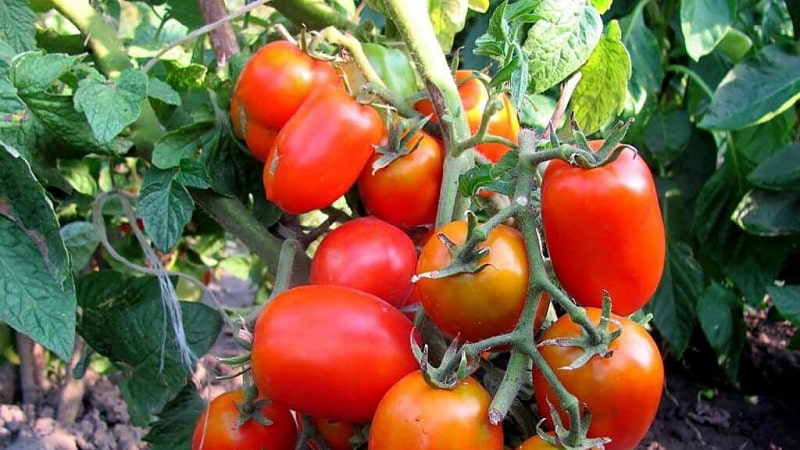
Fruit characteristics, yield
The fruits of Buyan have a rounded, elongated plum-shaped shape. A ripe fruit can weigh on average from 80 to 150 g, has fleshy pulp and thick smooth skin, and a sour-sweet taste. There are few seeds in the pulp: one fruit has 3-6 seed chambers.
How to grow seedlings
With the right approach, Buyan bears fruit regularly throughout its seasonal life. But in order to reap a bountiful harvest, you should take care of the seedlings in advance. Seeds can be bought in the store, but it is better to collect them yourself by the beginning of autumn from the largest fruits.
Seed preparation
To obtain seedlings, smooth, even seeds without defects are used.
Regardless of whether your seeds are purchased or collected yourself, Before planting, it is recommended to provide them with protection from viruses and infections - pickle them in a solution of potassium permanganate. The main thing here is not to overdo it seeds: 15 minutes is enough.
After potassium permanganate, the seeds should be washed with running water. Immediately before planting, they need to be kept in salt water - this increases the viability of future plants. Seeds from well-known manufacturers do not need to be subjected to such treatment - they are completely ready for sowing.
Container and soil
For planting, you can use whatever is at hand: ceramic pots, wooden or plastic boxes, cups, etc. However, it must be taken into account that the height of the sides should not exceed 10 cm. It is also worth taking care of drainage.
If the soil for seedlings is taken from the garden bed, then it needs to be disinfected, since the likelihood that it contains fungal infections and pest larvae is very high. You can disinfect the soil by holding it in a well-heated oven or pouring boiling water over it. You can etch with the same solution of potassium permanganate.
For your information. For reliable disinfection, soil treatment methods can be combined with each other.
For greater safety, it is better to buy already treated soil in gardening stores.
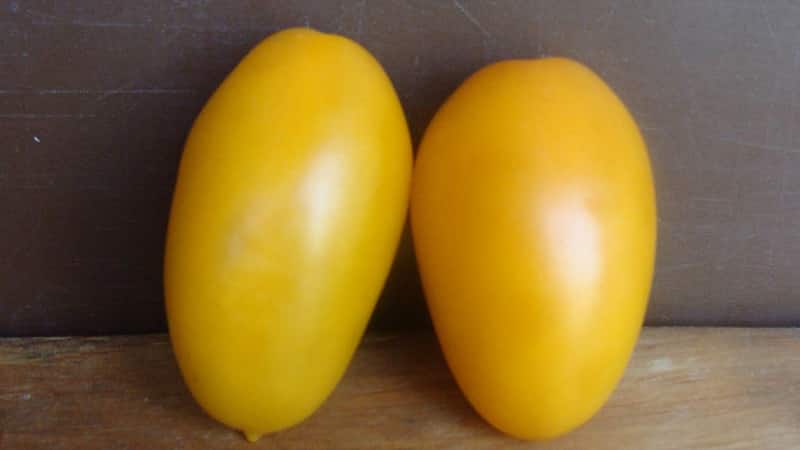
Sowing
By the end of March, you can start planting, sowing the seeds into the soil at a distance of 2 cm from each other and no deeper than 1 cm. A stable temperature of + 20-25 degrees should be maintained in the room with the seedlings. But the soil cannot be overheated; the seeds may die.
If it is not possible to provide constant heat, you can cover containers with seedlings with film to create a certain microclimate. If sowing is organized correctly, the first shoots will appear in 6-7 days.
Growing and care
In order for the seedlings to grow faster, it is necessary to create conditions for additional lighting.
After seedlings have appeared in the form of two or three leaves, it is necessary to transplant the seedlings into larger containers.
It is useful to feed the sprouts with an ash solution: 1 tablespoon of wood ash per 1 liter of non-cold water. There is no need to get carried away with fertilizing: 2-3 times before picking plants is enough.
Before planting in the garden, seedlings can be gradually accustomed to the outside temperature: 12 days before transplanting, you need to gradually reduce the temperature in the room and ventilate it frequently. If possible, take pots of seedlings outside for a while.
Young tomatoes are planted in the ground as the soil warms up: The optimal temperature is 15 degrees Celsius. 10-15 days after transplantation, during the formation of the ovary, the plants can be given phosphorus-nitrogen fertilizing. When Buyan is flowering, feed it with mineral and organic fertilizers; it is recommended to include potassium sulfate. After this, add fertilizer two more times - during active plant growth and fruiting.
Since Buyan is a low-growing shrub, It is important to correctly form the bush at the growth stage - 3-4 stems. A plant formed into one stem will bear little fruit.
Watering tomatoes can be done in the usual way or by drip, but always at the root. Do not forget about weeding and removing rotten and dead leaves and stems, as this is a fertile environment for the development of diseases and pests.
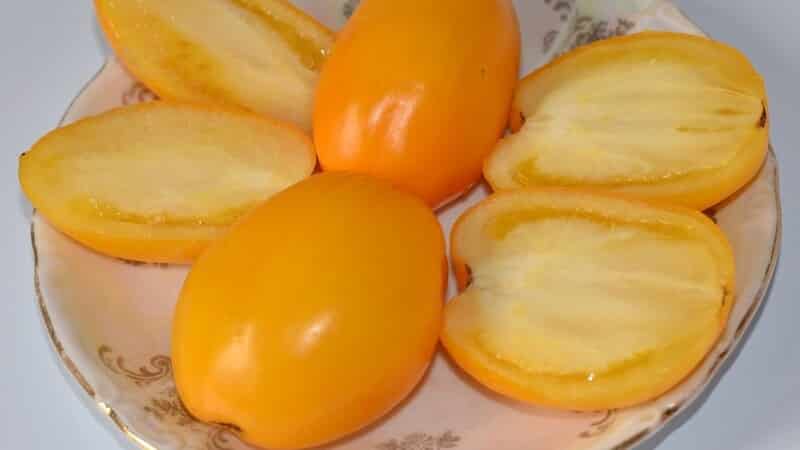
Possible difficulties when growing the Buyan variety
For beginning gardeners, not everything always goes smoothly - both in germinating seeds and in further caring for plants.
Problems with seedlings
All conditions have been created, artificial lighting has been established, the seeds are carefully covered with film, but there are no sprouts. What is the reason? In addition to low-quality seeds, the following reasons can lead to this result:
- You may have planted the seeds too deeply in soil that is too heavy for them. The seeds simply suffocated under a layer of airtight soil;
- drainage is not thought out: the soil is peroxidized and fermented, which causes the seed to rot;
- you placed the box with seeds in a very hot room - perhaps next to heating appliances. The seeds could have succumbed to the oversaturation of steam.
Problem with sprouts
Your seeds have sprouted, but they do not bring joy: they are too faded and elongated, as if rickety. This may be for the following reasons:
- lack of light - you should take care of artificial lighting directly above the box with seedlings;
- When planting the seeds, you placed them too close to each other. Transplanting some of the sprouts into another container will help here. But such forced picking slows down the growth of the plant by 12-15 days, this must be taken into account before planting in open ground;
- Perhaps you overdid it with fertilizers, in which case it is better to transplant the seedlings into another, more “calm” soil.
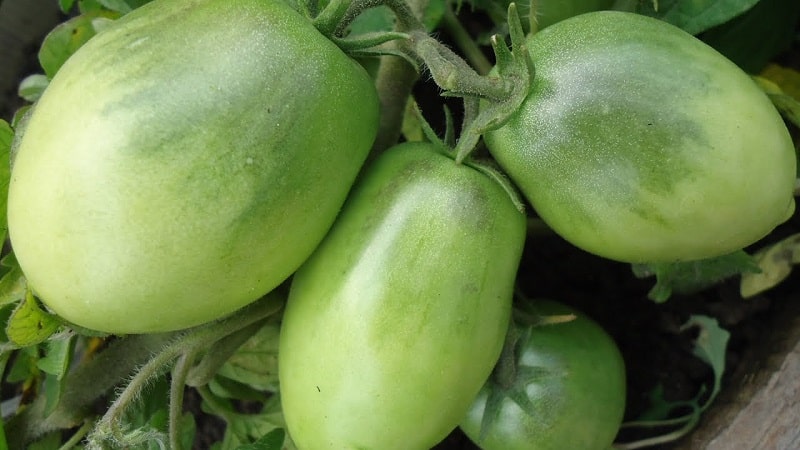
Diseases
Buyan is resistant to most diseases, but if a greenhouse or garden is infected through the soil or garden pests (for example, aphids), then it may also be at risk.
Fungal diseases:
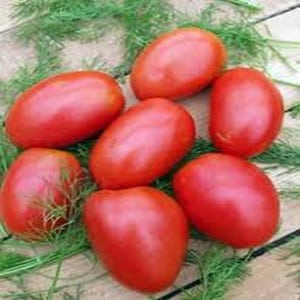 Gray rot - a disease that affects closely planted plants. Characteristic signs of the disease are a white fluff-like coating on the fruits, spots on the leaves and stems. The drugs “Fundazol” or “Switch” will help fight the disease.
Gray rot - a disease that affects closely planted plants. Characteristic signs of the disease are a white fluff-like coating on the fruits, spots on the leaves and stems. The drugs “Fundazol” or “Switch” will help fight the disease.- Fomoz (brown rot) - The entire above-ground part of tomatoes is affected. The disease can be detected by the appearance of the leaves: they are covered with brown spots, which increase with the progress of the disease. If phomosis affects the fruits, then small black spots are visible on them, which also grow. In this case, the core of the fruit is also affected. In the initial stage of the disease, preparations based on copper oxychloride and Bordeaux mixture will help.
- Black leg - The fungus attacks the root system of the plant. Conditions for its reproduction can be the constant use of the same land, temperature changes, and high humidity. The fight against the disease will consist of treating the contaminated soil: watering with a solution of potassium permanganate, loosening, and, if necessary, replacing the soil.
Bacterial diseases:
- Bacterial cancer - bacteria infect the vessels of the plant, it begins to wither before our eyes. The disease progresses from the bottom up: from the lower leaves, which curl and wither, to the fruits, where black spots appear on them.
- Necrosis of the stem core - appears during fruiting. Light spots appear on the leaves, and the leaves themselves curl. As a result of the disease, the tomato stem becomes hollow and brittle from the inside, and the plant dies.
- Bacterial spotting of fruits - affects early-ripening varieties planted in early spring. All parts of the plant suffer, the disease manifests itself in the form of growing spots on the leaves and stems. When blooming, the flowers are affected - they dry out.
In case of bacterial diseases, it is necessary to carry out protective measures in the form of weeding and removal of affected parts of the plant. If signs of disease are detected, plants must be sprayed with Abiga-Pik solution. The preparations “Fitolavin-300”, “Gamair” and “Baktofit” are recommended as the most effective in the fight against bacterial diseases.
For your information. Greenish spots may appear on the fruits of the Buyan variety. This is not a disease, but a feature of the variety. As the fruit ripens, the spots disappear.
Pests
Buyan tomatoes grown in greenhouses are most often attacked by spider mites.The tick feeds on the sap of the plant, biting through its leaves, which as a result begin to turn yellow, become covered with small dots and dry out.
If the mite is found in abundance on plants, a cobweb will be visible - a waste product of the pest. If you see cobwebs on your tomatoes, it’s time to act, because this is a sign that the plants are at high risk and may die.
Spraying the bushes with a soap solution will help get rid of the tick. Since mites cannot tolerate the taste and smell of sulfur, treating the greenhouse with sulfur smoke will be effective.
Tomatoes in open ground can also be attacked by mites. If traditional methods do not help, then it is recommended to use the drugs “Plant-Pin”, “Ethisso”, “Actellik”.
The nuances of growing Buyan in open ground and in a greenhouse
The Buyan tomato, as an early-ripening, low-growing variety, is ideal for growing in a greenhouse. It does not bush and does not create thickets; it does not need to be pinched or tied up.
Here are some recommendations for growing Buyan in a greenhouse:
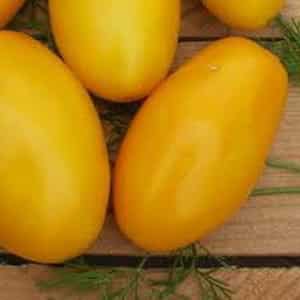 It is better to plant tomatoes along the wall greenhousesrather than across - this way they will have more access to light.
It is better to plant tomatoes along the wall greenhousesrather than across - this way they will have more access to light.- Create rows so that it is convenient to approach everyone: side rows along the walls, central rows in the center.
- soil with seedlings do not overfeed with fertilizers with a high nitrogen content.
- Tomatoes are light-loving plants, so access to light should be maximum.
- The greenhouse must be regularly cleaned, dead branches and leaves must be removed and taken outside, otherwise pests may appear.
When planting tomatoes in open ground, it is also necessary to adhere to certain standards, because Properly planted bushes are the key to plant health:
- The soil in the beds must be prepared for planting in the fall;
- tomatoes grow well in the area after cucumbers, carrots, onions and cabbage;
- the distance between rows should not be less than 40 cm;
- Tomatoes can be planted in beds in a checkerboard pattern and parallel to each other, but the distance between the bushes must be sufficient to ensure access to processing each bush;
- Weeding, loosening the soil, removing yellowed and rotten parts of the plant are mandatory activities during the season.
Harvesting and application
Buyan produces a harvest three months after germination, so if your tomatoes sprouted in April, then in June you will receive the first fruits. They need to be collected regularly, but it is better to leave one ripe fruit on each bush, as it contributes to the ripening of the remaining fruits.
If you miss time, the fruits will become overripe, which means they will lose their beneficial qualities and appearance, and become loose and tasteless. If you want fresh tomatoes for the table, it is better to pick them when they are ripe and bright red or yellow.
Buyan tomatoes are an excellent product for conservation. Their fruits, both ripe and unripe (green), can be canned, pickled and salted. It should be borne in mind that these tomatoes do not last long when fresh. It’s better if they go from the garden to canned food or juices. Thanks to its dense pulp, the tomato is suitable for both drying and freezing.
Advantages and disadvantages of the variety
Although Buyan was bred for regions with cold weather conditions, it has become popular everywhere, as it has a number of advantages that farmers love. One of them is harvest abundance: up to 8 kg of fruits are obtained from one square meter. At the same time, the variety is unpretentious: it patiently tolerates aridity and temperature changes.Such common diseases as late blight and tobacco mosaic are not a threat to Buyan.
Many gardeners also liked the appearance of the fruit: medium-sized, neat, smooth, shiny. During heat treatment, the tomato skin remains intact and does not crack. In home canning and drying, all the taste and aroma are preserved.
Farmers include the following disadvantages of the variety:
- inability to store fresh for a long time;
- When ripening on the bush, the skin of tomatoes often bursts. This fact in itself does not cause damage, but microbes that are harmful to humans can settle in the cracks.
Farmer reviews
Let's consider the reviews of summer residents who have already grown the Buyan tomato.
Margarita: “I bought a bag because I had already heard that this variety is “for the lazy.” The seeds sprouted with a bang. I didn’t particularly choose the place for the seedlings: the only free space was in the shade of the tree. Due to the fact that there was not enough light for them, the tomatoes appeared later than other varieties that I planted on the site. But I collected fruits regularly. The bush is low, shaggy, it does not need to be trimmed or tied up. Just a beauty, not a plant!”
Alina: “We are beginner gardeners, but Buyan’s seedlings did not disappoint: we took them to the dacha without any hassle, and they were still lush, fresh, nothing wilted or broke. Just as they were planted in the ground, they grew - no worries with them, no hassle! The tomatoes themselves are oval, smooth, a sight for sore eyes. I made salads from them all summer. True, the skins on them often burst, but since I immediately processed them in the kitchen, it was okay, not fatal.”
Igor: “Good variety, didn’t disappoint. For the sake of experiment, I planted them in the greenhouse with other tomatoes. What was surprising was that the seedlings, unlike other varieties, did not stretch.I didn't bother with it much. Planted in April, starting in June, the bushes bore fruit all summer. The harvest was bountiful; every day I left the greenhouse with two full buckets of fruit. I’ll definitely plant it next year.”
Conclusion
The Buyan tomato variety is an excellent option for those who want to enjoy tomatoes all summer long without putting in a lot of effort, and for those who appreciate the taste and aroma of tomato preparations. Having planted this variety on your plot, rest assured: despite the cold or drought, you will still be left with a good harvest - the Fighter will not let you down!